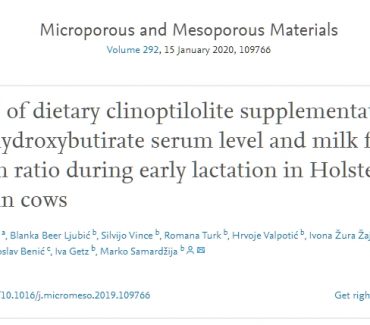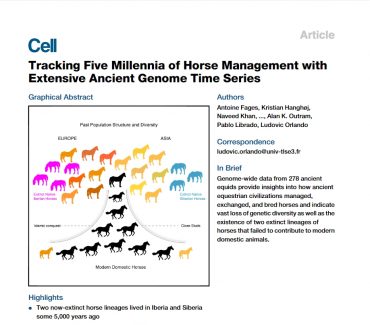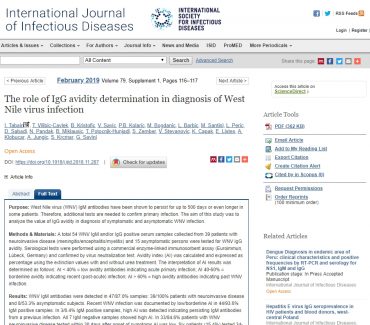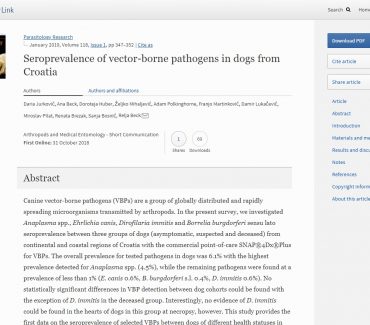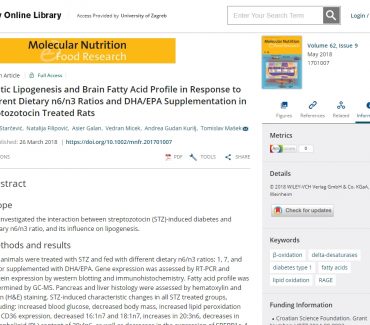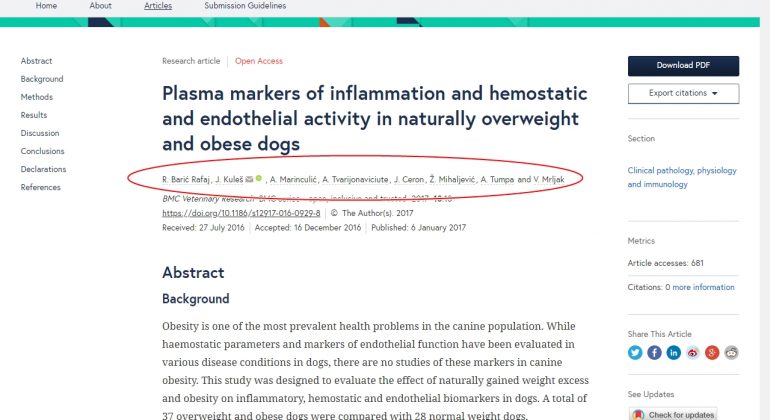
https://doi.org/10.1186/s12917-016-0929-8
Abstract
Background
Obesity is one of the most prevalent health problems in the canine population. While haemostatic parameters and markers of endothelial function have been evaluated in various disease conditions in dogs, there are no studies of these markers in canine obesity. This study was designed to evaluate the effect of naturally gained weight excess and obesity on inflammatory, hemostatic and endothelial biomarkers in dogs. A total of 37 overweight and obese dogs were compared with 28 normal weight dogs.
Results
Overweight and obese dogs had significantly elevated concentrations of serum interleukin-6 (IL-6) and C-reactive protein (hsCRP). Number of platelets, activity of factor X and factor VII were significantly higher, while activated partial thromboplastine time (aPTT) and soluble plasminogen activator receptor (suPAR) were significantly decreased. Statistical analysis of high mobility group box – 1 protein (HMGB-1), soluble intercellular adhesive molecule -1 (sICAM-1) and plasminogen activator inhibitor type 1 (PAI-1) concentrations did not show significant differences between the total overweight and obese group and the normal weight group of dogs.
Conclusions
Analytical changes in the dogs in our study reflects that weight excess in dogs can be associated with a chronic low degree of inflammation and a hypercoagulable state, where primary and secondary hemostasis are both affected. However obesity is not associated with impairment of endothelial function in dogs.
https://bmcvetres.biomedcentral.com/articles/10.1186/s12917-016-0929-8

 Sveučilište u Zagrebu
Sveučilište u Zagrebu 
